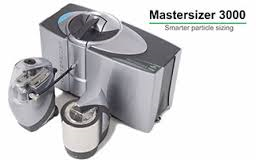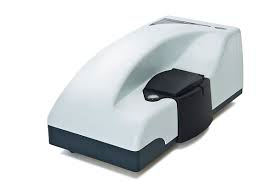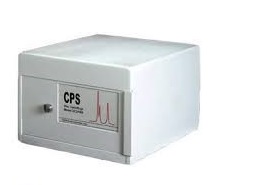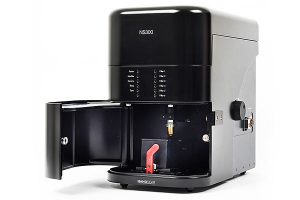Across most sectors, the particle size of products and materials is a critical parameter in their manufacture. Changing the particle size distribution of a material has a massive impact on its characteristics and it’s behaviour either during its manufacture, within the final product or on its effects within the environment.
For example, the particle size distribution of a product like coffee greatly impacts its taste and quality. As discussed in Malvern Panlytical’s Application Note : MRK781-01.
The key factors which need to be considered include:
- • Dissolution rate
- • Flowability / Pump rates
- • Stability
- • Appearance
- • Safety
- • Environmental Impact
A current hot topic both nationally and worldwide is surrounding how a material’s particle size distribution effects the safety of that material. For example, if the material has a high fraction of particles within the respirable range – PM1, PM2.5 or PM10, how does this impact on the health of either the workers in the factories and laboratories or further down the line during its intended use to the general public.
Classification of whether a material comes under the EU definition (2011/696/EU) of a nano material is also a key question when it comes to safety of a product and its subsequent registration under the REACH regulations.
For more information on how Lawson Scientific can test your Nanomaterials see our Application Note;
Nanomaterials Application Note Lawson Scientific offer a range of measurement techniques and particle size analysis testing methods that covers virtually all materials — wet or dry, ranging from 0.3nm to 4mm in size. Our expert scientists can help select the most appropriate test for your material/system from the following:

- • Dynamic light scattering/photon correlation spectroscopy
- • Laser diffraction
- • Electrozone sensing
- • Centrifugal sedimentation
- • Nano Particle Tracking
- • Imaging
- • SEM (EDS optional)
- • TEM
- • XMT
- • Optical
Depending on the technique used, we can report:
- Particle size distribution – weighted to volume, number or surface area
Additionally, Lawson Scientific offer a fully validated method development service.
Get in touch for a quote or to find out more about how we can support you ….
Laser Diffraction
One of the most robust methods for particle sizing, laser diffraction techniques measure the intensity of light scattered by particles of an unknown size over a range of angles. The resulting pattern of scattering is deconvolved and a theoretical pattern generated using Mie theory is matched to it.

Our scientists work with clients across many industries and are experienced in measuring a variety of samples from dry powders and slurries to emulsions. If your samples are soluble in water we can measure them in a non-aqueous dispersant, or use a surfactant if it wets poorly. Additionally, we can report means weighted results according to volume, number or surface area.
Capabilities
We have a Malvern Mastersizer 3000 with multiple cells, enabling us to measure samples with a variety of properties:
- • Small sample volumes (for high value or hazardous samples)
- • Samples with poor wettability
- • Aqueous and non-aqueous
- • Dry samples
Dynamic Light Scattering/(DLS)
Light hitting particles in a solution is scattered, and according to the degree of interference from Brownian motion, the change in intensity of this scattered light over a period of time is detected. As long as the viscosity and temperature of the dispersant are known, this variation in light intensity can be used with the Stokes-Einstein relationship to calculate particle size, distribution and polydispersity.
Ideally suited to high value samples in small quantities and nanoparticles, our scientists have experience in measuring the size of a variety of molecules from peptides to gold.
Capabilities
We use a Malvern Zetasizer Nano ZS which measures:

- • 3nm – 10µm size range
- • Polydispersity analysis
- • Aqueous and non-aqueous samples
- • Measurement of dilute samples
Additionally, we can use the Zetasizer for laser doppler micro-electrophoresis to report Zeta potential and measure the iso-electric point in combination with the autotitrator.
Electrozone Sensing
The Coulter technique requires particles to be suspended in a conductive liquid and drawn through an aperture between two electrodes. The two electrodes generate a current across the aperture and as the particles are drawn through it, the current is disrupted. This generates a pulse that is amplified, counted and analysed.
Our scientists most frequently use the Beckman Coulter Multisizer to analyse samples such as stack emissions and filtrates. We have several aperture sizes which can be combined to provide a particle count over a greater size range.
Centrifugal Sedimentation
Our scientists can help you understand the particle size distribution of your materials using the CPS Disc Centrifuge.

Sedimentation of particles in a fluid has long been used to characterise particle size distribution. Stokes’ law is used to determine an unknown distribution of spherical particle sizes by measuring the time required for the particles to settle a known distance in a fluid of known viscosity and density. Sedimentation can be either gravitational or centrifugal. Relying on gravity to produce a settling effect takes a long time and renders the sedimentation method unsuitable for nano-sized particles. However, if a large centrifugal force is applied to the system the experimental time is reduced and the lower size limit that the particles may be measured is greatly reduced. Using this principal, the CPS Disc can measure particles in the range of 5nm to 75µm
Differential Centrifugal Sedimentation Application Note
Nanoparticle Tracking

Based on optical microscopy techniques, Nanoparticle Tracking utilised by escubed has a laser for a light source and measures particles on a near-black background. It automatically tracks and sizes individual particles identified by Brownian motion in polydisperse and multimodal samples. Additionally, the Nanosight can record clips of individual particles being tracked.
Nanosight Application Note
 +44 (0)1582 704807
+44 (0)1582 704807 enquiries@lawsonscientific.co.uk
enquiries@lawsonscientific.co.uk






